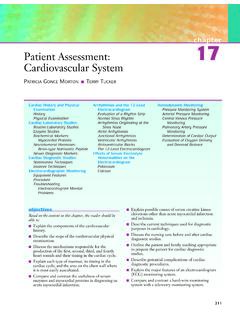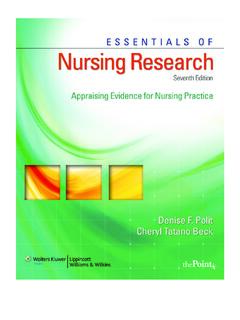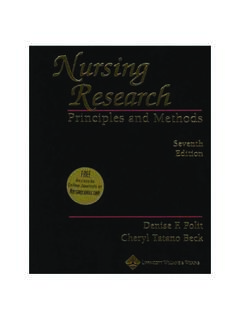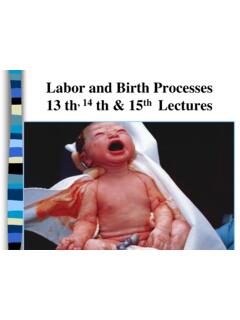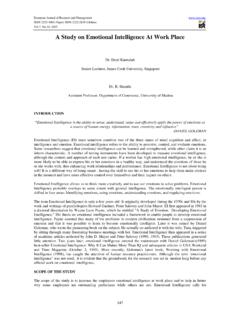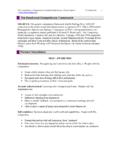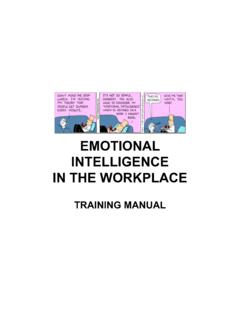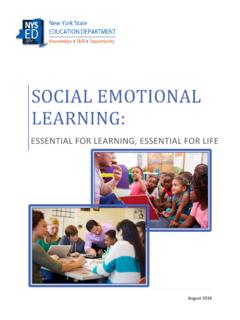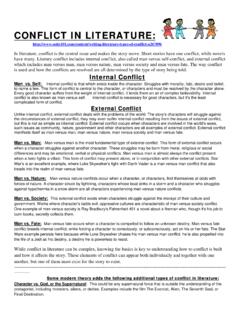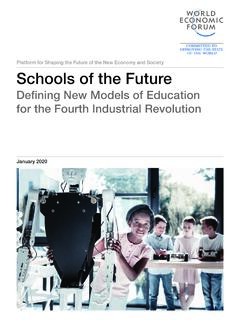Transcription of Adulthood Age Group Growth & Development
1 Adulthood Age Group Growth & Development Lecture 11 2 Three Phases of Adulthood Period Significant Events Early (young) Adulthood Begins when adolescence reaches maximum height Girls age 20 yr Boys age 22 yr Lasts until age 40 yr Middle Adulthood Ages 40-60 yrs Late (old) Adulthood Age 60 until death 3 Emerging Adulthood In some countries, added years of education and later marriage has delayed full adult independence. This seems to have created a new phase which can be called emerging Adulthood , ages 18-25. 4 Early (Young) Adulthood Begins in late teens/early 20s and lasts through the 40s Term for the transition from adolescence to Adulthood that is characterized by experimentation and exploration Early Adulthood is a time of: establishing personal and economic independence Identity exploration, especially in love and work Instability.
2 Self-focused Feeling in-between 5 5 Young Adulthood Physical Development Physical strength typically peaks in early Adulthood (the 20 s and 30 s) Although physical changes are minimal during this phase , the weight and muscle mass change as a result of diet , exercise ,pregnancy and lactation. Growth and strength in early Adulthood , then slow process of decline afterwards Decline affected by health and lifestyles 6 Cognitive Development in Early Adulthood Piaget believed that the formal operational stage (ages 11 to 15) is the highest stage of thinking Adults gain knowledge, but ways of thinking are the same as those of adolescents Some researchers disagree with Piaget and believe that thinking in early Adulthood becomes more realistic and pragmatic Post-formal thought - thought that is Reflective and relativistic Realistic.
3 Their idealism decreases Emotion & subjective factors can influence thinking Late adolescence to early Adulthood is the main age window for wisdom (expert knowledge about the practical aspects of life that permits excellent judgment about important matters). 7 7 emotional Development in Early Adulthood In his theory of psychosocial Development , Erikson described two fundamental themes that dominate Adulthood : love and work During early Adulthood , individuals enter Erikson's intimacy versus isolation stage (developmental task of forming intimate relationships with others or becoming socially isolated) Independence.
4 Separation from family of origin Learn to function without using parents as major source of comfort, security, direction Establish sense of equality with parents Develop adult friendships 8 8 Becoming a Parent Advantages of Having Children Early: Parents are likely to have more physical energy Mother is likely to have fewer medical problems with pregnancy and childbirth Parents may be less likely to build up expectations for their children Advantages of Having Children Later: Parents will have had more time to consider life goals Parents will be more mature and will benefit from their life experiences Parents will be better established in their careers and typically have more income 9 9 Friendships The focus of adult friendships is somewhat different for men and women Female friends tend to: confide in one another about their feelings, problems, and interpersonal relationships Male friends typically: minimize discussions about relationships or personal feelings or problems.
5 Instead, male friends tend to do things together that they find mutually interesting, such as activities related to sports or hobbies 10 Health promotion guidelines for young adults Health tests and screening : Routine physical examination. dental assessment. vision and hearing. breast self exam. testicular self exam, pap smear.. screening for cardiovascular diseases. Safety. Nutrition and exercise Social interaction Stress management techniques are essential. 11 Middle Adulthood Period from 40 years of age to about 60 Middle Adulthood is time of: expanding personal and social involvement and responsibility assisting next generation in becoming competent, mature individuals reaching and maintaining satisfaction in a career A decline of physical skills Balancing work and relationships A reassessment of life s priorities 12 Height, weight and strength.
6 The benchmarks of Change in Middle Adulthood Height reaches a maximum during the 20 s for most people, and remains stable til about age 55. After age 55, bones become less dense and ultimately women lose 2 inches and men lose 1 inch in height. People get shorter with aging due to bone loss in their vertebrae Weight typically drops after we reach age 50; likely because we lose muscle Joint stiffness and difficulty of movement usually accompany a progressive loss of bone in middle age 13 13 Physical Development Females may experience bone loss as early as age 35.
7 Men may not experience it until age 65. Muscle strength and stamina may begin to decline. Hair may begin to turn gray and thin; wrinkles appear in the skin. Chronic health problems such as hypertension, heart disease, and diabetes may surface. 14 Sensory Effects of Aging Vision: Decline in vision becomes more pronounced Adaptation to dark and driving at night becomes especially difficult Color vision may decline as a result of the yellowing of the lens of the eye Eye lenses become hard and cannot accommodate for near vision; result is farsightedness in many people by age 45 15 Hearing in Middle Age Hearing undergoes a gradual decline beginning in middle Adulthood .
8 The primary sort of loss is for sounds of high pitched, a problem called Presbyopia. Men are more prone to hearing loss than women. Because the two ears are not always equally affected by hearing loss, sound localization, the ability to detect the origin of a sound, is diminished. Some (but not all) hearing problems can be corrected by hearing aids 16 The Female Climacteric & Menopause Starting about age 45, women enter a period known as the FEMALE CLIMACTERIC, the transition from being able to bear children to being unable to do so.
9 This period lasts about 15 to 20 years. The most notable sign in MENOPAUSE, the cessation of menstruation. The production of estrogen and progesterone drop. Symptoms such as "hot flashes", headaches, feeling dizzy, heart palpitations, and aching joints are common during menopause. Half of women report no symptoms at all. 17 Men in Middle Do men experience the equivalent of menopause? Not really. ~Men do experience some changes during middle age that are collectively referred to as the MALE CLIMACTERIC (Andropause), the period of physical and psychological change relating to the male reproductive system that occurs during late middle age.
10 The most common is the enlargement of the prostate gland. Symptoms are problems with urination, including difficulty starting to urinate and frequent need to urinate during the night. Men still produce sperm and can father children through middle age. 18 Mortality Rates Chronic diseases are the main cause of death during middle Adulthood Leading cause of death is heart disease Second leading cause is cancer Cerebrovascular disease is the third leading cause In the 1st half of middle age, cancer claims more lives than heart disease; trend is reversed during the 2nd half of middle age Accidents because of decrease visual acuity.




